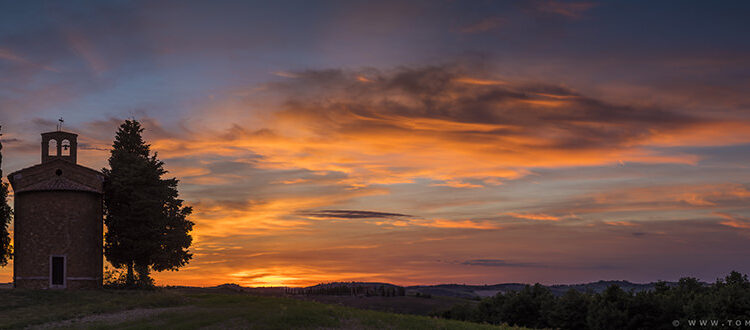
Capturing a great sunset image is hugely satisfying, but which landscape photography sunset tips and settings get the best results?
With conditions and available light changing quickly, your preparation and a thorough understanding of the best camera settings and composition techniques are all important for you to capture the perfect sunset photo.
Beautiful images of a sunset
In addition to sunrise, the ‘golden hour’ at the end of each day is a much loved time for many landscape photographers wanting to capture beautiful images of a sunset. Sunset frequently offers you the chance to capture even more spectacular images than those at sunrise. More dramatic tone and variation of colour is what draws a landscape photographer to catch a sunset.
When the sun begins to set, the atmosphere filters out many of the shorter blue rays of light leaving deep yellows, oranges, reds and blues resulting in more saturated and cleaner primary colours.
Best conditions for sunset photography
Once you have decided on your preferred shooting location check the weather forecast before you set out to ensure your location is likely to have the best conditions for sunset photography.
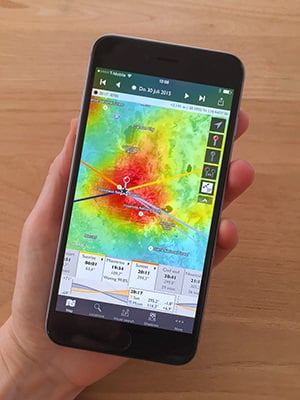 To do this, it is worthwhile getting a few useful Smartphone Apps such as The Photographer’s Ephemeris (which now offers a new planning tool called Skyfire) or PhotoPills.
To do this, it is worthwhile getting a few useful Smartphone Apps such as The Photographer’s Ephemeris (which now offers a new planning tool called Skyfire) or PhotoPills.
These will help you determine whether the weather conditions may be favourable and to track the direction of the sun when planning your sunset shoot.
Ideal conditions are when the cloud cover is about 50 to 70 percent as this will allow the cloud formations to catch the colours of the setting sun.
You may be faced with heavy dark clouds but if there is a break in the sky on the horizon it can indicate good conditions are coming. Weather conditions can change quickly so make use of the new App technology to help you plan.
Aim to arrive at your sunset location at least an hour before the sun is due to set to give you time to get to your chosen spot and set up using your Apps to determine the best position.
Top 5 tips on how to take the best sunset shot
- Tripod – will be essential as you will need to use slow shutter speeds as the light levels will fall quickly as the sun sets. Your tripod needs to be both lightweight to carry easily but sturdy enough to plant in uneven ground or in a sand dune. If you choose a tripod with a geared head it will give more control and finer adjustment, but these tend to add to the overall weight. A good ball head is recommended.
- Use a strong ND graduated filter – the sky will be brighter than the foreground so contrast will be the main difficulty and a graduated filter will help overcome this. Make sure you adjust your settings in conjunction with using the filter. Exposure settings should be determined by the strength of the available light and ND filter you use.
- Composition – look for a strong foreground for a point of interest or objects that can be used for silhouettes against a colour intense sky.
- Turn away from the sun – try as an alternative shot as more colour can spread in the sky away from the sun and it will be easier to manage and balance the exposure.
- After the sun goes down don’t just pack up and think about leaving – the 20 or 30 minutes after the sun goes below the horizon is known as the afterglow when the warm colours of the receded sun spread across the sky. So experiment with this extra time by varying your exposure and focal length and you may be surprised at your results.
Beyond landscape photography sunset tips and settings – best locations…
 A west facing coast
A west facing coast
The obvious choice of capturing a sunset is over the sea and if you head to any west facing coastline of the UK you will not be disappointed. The coast of west Cornwall in particular with its dramatic rocky coastline offers many sunset opportunities.
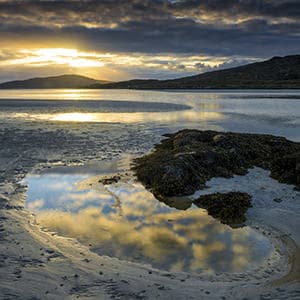 More good sunset locations can be found if you venture further northwards across Wales and the Pembrokeshire coast and towards the west coast of Scotland which is widely renowned for its amazing sunsets, especially the western isles such as Harris, Lewis and Skye.
More good sunset locations can be found if you venture further northwards across Wales and the Pembrokeshire coast and towards the west coast of Scotland which is widely renowned for its amazing sunsets, especially the western isles such as Harris, Lewis and Skye.
Over hills and dales
There are many peaks and dales to discover in the Peak District, Lake District and North York Moors and they will all offer alternative sunset locations away from the obvious coastal ones. 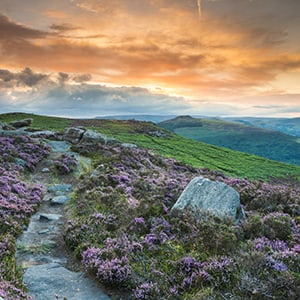
A dramatic expanse of colourful flowers can offer strong foreground interest for composition and moorland heather from late summer will add a blaze of vivid purple colours to a sunset.
Inland waterways
Rivers and inland waterways can offer a different dimension for sunset opportunities. The twisting serene waterways such as the Norfolk Broads offers many chances to capture some different sunset shots with windmills and boats as a backdrop.
Once you are getting some good results with your sunset landscape photography you can progress your skills further and master some new techniques.
Look out for our future articles for tips and information on techniques you can start practising to improve your landscape photography skills further; Water and Reflections in the Landscape where you can discover the art of photographing water and Coastal Landscape Photography which will offer some great ideas on how to shoot the finer details.


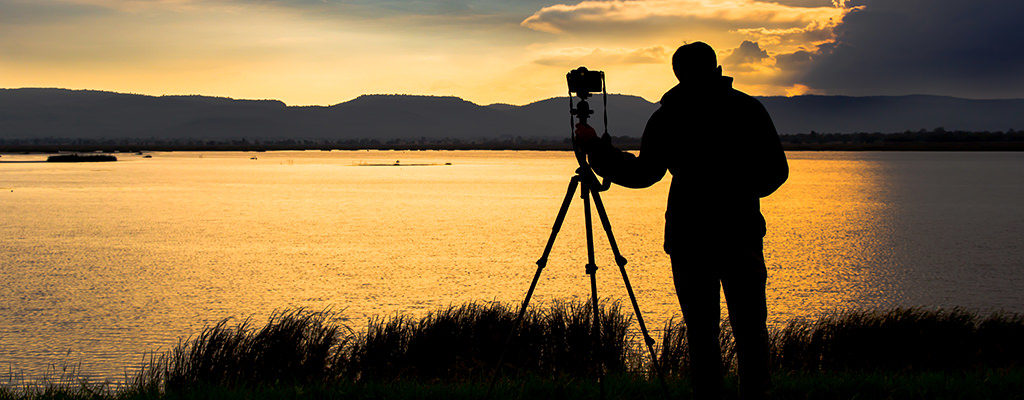 A west facing coast
A west facing coast